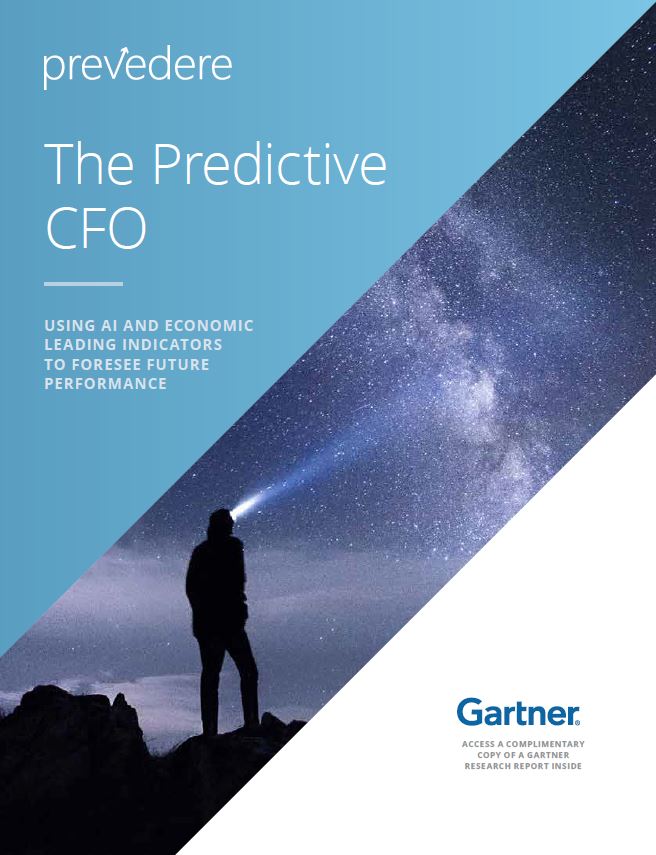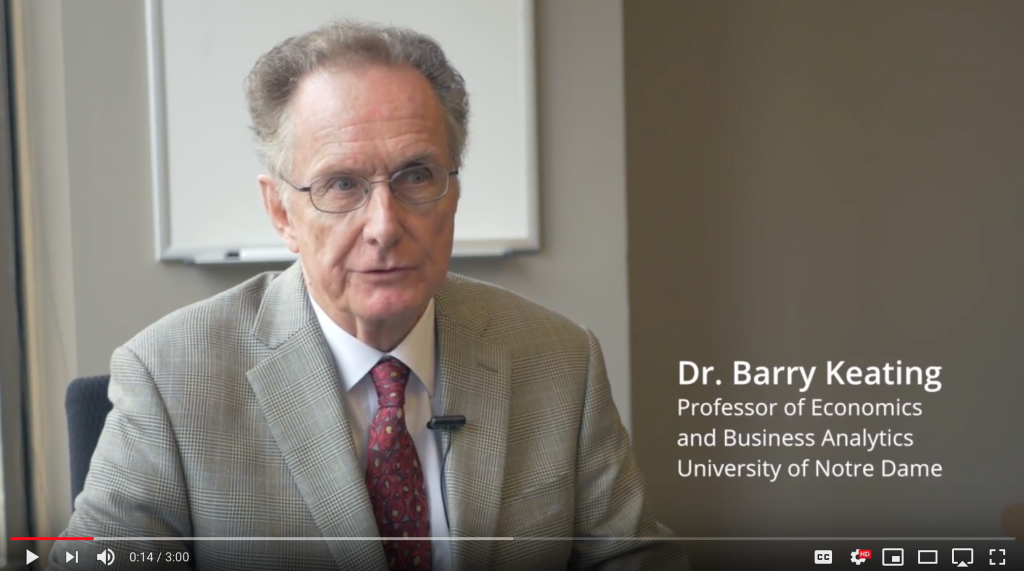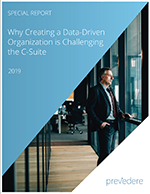Last Updated: September 10, 2019
In the growing global business world, experts are looking to new technology for data analytics and forecasting solutions. Executives seem to agree. In a recent C-Level report about forecasting technology, 40% of executives said that having a third-party partner to assist them with external data and analytics would be extremely/very important to their planning needs.
According to a recent NewVantage Partners’ 2019 Big Data and AI Executive Survey, as much as (69%) of executives from major global corporations admit that they have yet to create a data-driven organization. Further, executives that identify their firms as being data-driven has dropped from 37% in 2017 to 31% in 2019. So, why is the evolving role of data and analytics posing problems for executive teams? One of the more common themes, from leadership, often involves explaining how external factors, such as global economic volatility or changing consumer behavior, can potentially impact overall business performance.
We now understand that external factors can influence up to 85% of a company’s performance. We also know that companies miss their projected forecast by 13% on average, and according to the Institute of business forecasting, companies lose up to $300M per year in profit for every 1% error in forecasting.
The Past Meets Future Technology

According to Dr. Barry Keating, a Notre Dame University professor, and 30-year forecasting practitioner, many enterprise companies are continuing to use outdated data analytics science for forecasting methods. Dr. Keating, as a veteran in the space long before ‘Big Data’, was a common phrase, can see why large companies with an abundance of accessible information are still missing the mark.
“Thirty years ago, the problem companies had was that very little data was available. Companies often didn’t keep track of sales, price changes or promotions for at least not two or three years in the past. Most of the models we used were time-series models that have been around for 50, maybe 100 years, such as moving averages, exponential smoothing or ARIMA,” said Dr. Keating.

The reason time series models have been used for so long, he explained, is because they handle trends, seasonality, and cyclicality very well. However, those models are blind to changes in the economy.
“The federal reserve bank of St. Louis did a study four years ago and found that anytime there is a downturn in the economy, the forecast errors of the Fortune 500 quadruple! The reason is they are using time-series models. They don’t have that ability to see ahead in terms of the economic changes,” Dr. Keating added.
Considering External Data
Ultimately, if the economy stays constant, then time-series models or ARIMA forecasting methods are appropriate, but that does not work for future-oriented outlooks. Dr. Keating explained, “Time-series models work very well when the economy is very stable. When the economy goes through a climate change, those models become totally unusable.”
He continued, “Now, what’s happening in the economy in the next 5 years? How many businesses are you aware of that were around in your childhood that isn’t around now? Things are changing very quickly, so as we get situations where it is easier to use outside data, time-series models will be quickly pushed in the background.”
Reflecting on Prevedere’s data analytics science-driven approach to forecasting, Dr. Keating explains how greater forecasting accuracy offers value across an organization. “Notre Dame uses Prevedere in the college of business for students interested in going into analytics. That’s virtually every student, whether it is marketing, management, accounting, finance, every area uses analytics,” said Dr. Keating.
Leveraging Advanced Data Analytics and Forecasting Technology
Closing the external data gap via technology may be the key to transitioning data and analytics initiatives that executives rely on for making sound forward-looking planning. Nearly half of executives (45.5%) say having the right software to collect and synthesize data hinders their ability to forecast. Just over 42% (42.1%) say converting data into insights is a hindrance, followed by gathering internal data (36.8%) and gathering external data (36.4%). Read the full report here >>
Business leaders realize that data and analytics improve business operations and the bottom line. Technology advancement are empowering executives to leverage advanced data analytics forecasting methods such as pulling external data sources to see how they impact various functions, from finance to marketing.
Technology advancements will continue to evolve data analytics science, forecasting and planning processes as solutions like Prevedere continue to innovate and empower companies to use data to their advantage.
It’s something that we haven’t seen before – there’s a familiar pool of software names that we use for statistics and mathematical correlations that fall into one category. Then there are public data sources like the Federal Reserve or StatUSA, available to everyone. Now if you can put the two together and add in proprietary software, provide a way to determine which pieces of data are important to forecast whatever it is you want to forecast – that’s where Prevedere is, said Dr. Keating.
 The transition to a data-centric culture, leadership is tasked to unite both relevant external data with internal data with the right emerging technology. Companies should be leveraging technology solutions that not only automatically collect, clean, and organize known data, but also identify external factors that may impact demand for their products and services into the future. Read the full report >>
The transition to a data-centric culture, leadership is tasked to unite both relevant external data with internal data with the right emerging technology. Companies should be leveraging technology solutions that not only automatically collect, clean, and organize known data, but also identify external factors that may impact demand for their products and services into the future. Read the full report >>
*The survey was conducted by Quest Mindshare, an independent survey company, from March 25, 2019, to March 31, 2019. Two hundred nine executives participated in the anonymous online survey.
Who is Dr. Barry Keating
Barry P. Keating is currently a professor of economics and business analytics in the Department of Finance at the University of Notre Dame. Barry has also served on the faculty of Virginia Polytechnic and State University, as chair of the Notre Dame Department of Finance, as manager of the Journal of Public Choice, and as Salvatori Faculty Fellow at the Heritage Foundation in Washington D.C.
Barry has consulted for Accenture, the Institute of Business Forecasting, and Forecast X. As co-author of Business Forecasting (McGraw-Hill), now in its Sixth Edition (and soon to be published Seventh Edition), his primary area of interest involves the use of analytics in solving corporate supply chain problems and forecasting. He is currently studying how non-linear models are used in supply chain management. Barry’s work has appeared in Public Choice, The Quarterly Review of Economics and Finance, and Applied Business Research, among others. Barry has been quoted in the Wall Street Journal, NBC News, and more. For full biography, background and publications, click here.